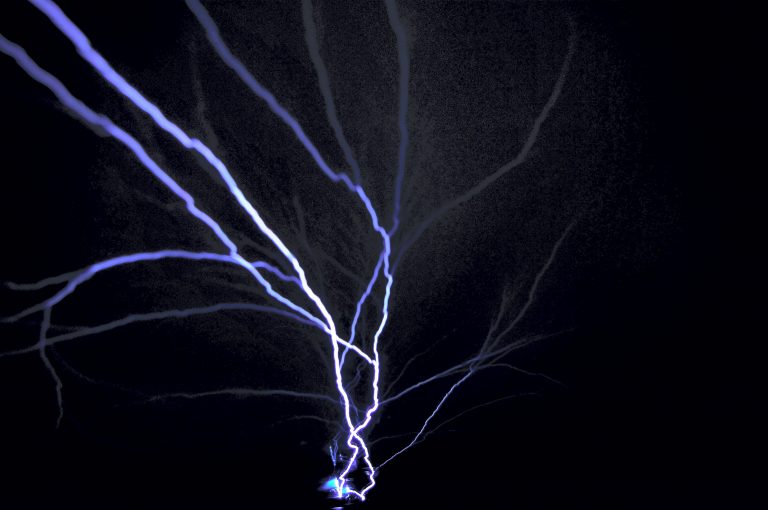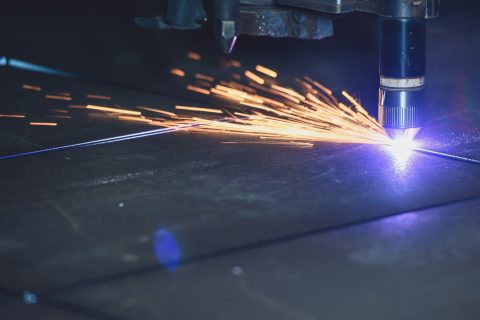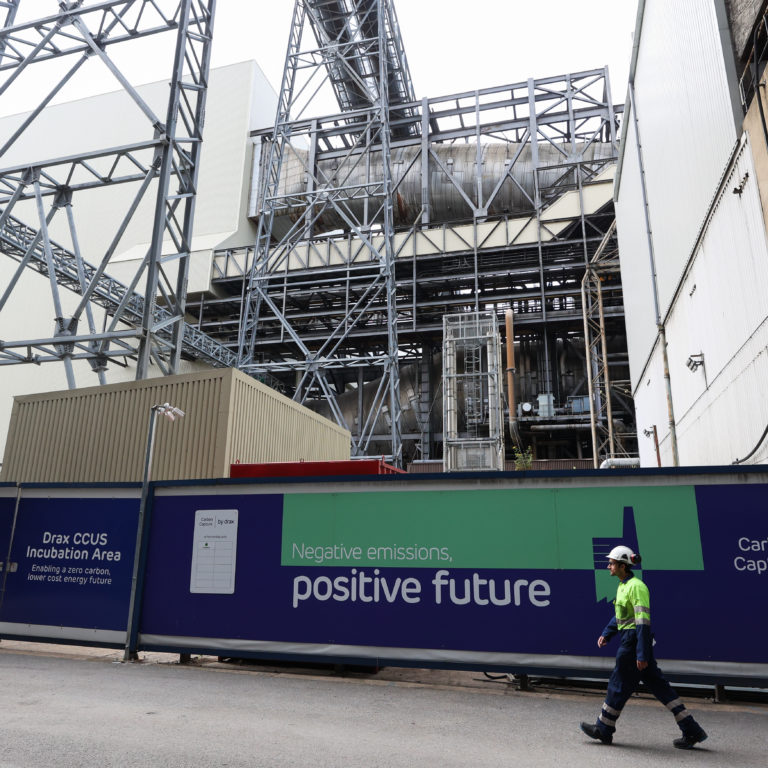A 14th century carrack quietly sails through the currents of the Atlantic Ocean in the middle of the night. Its navigation relies on the stars shining above, its power on the wind blowing behind. It’s a far cry from the technologically advanced vessels sailing today’s seas.
It was here, long before civilisation began using and generating electricity, that the ghostly, blue-white glow of electricity acting upon air molecules was often seen as it hovered around ships’ masts.
This phenomenon is known as St. Elmo’s Fire, after Saint Erasmus of Formia – the patron saint of sailors – and occurs following thunderstorms when the electric field still present around an object (such as a lightning rod or a ship’s mast) causes air molecules to break up and become charged, creating what’s known as a plasma.

St. Elmo’s fire on a cockpit window
For sailors in an era long before satellite guidance it was a good omen. What they didn’t realise, however, was it was one of the rare instances when electricity acts in a way that changes it from an unseen force to something we can see, hear and even smell.
The science behind seeing electricity
Normally, we can’t see electricity. It’s like gravity – an invisible force we only recognise when it acts upon other objects. In the instance of electricity, the most common way it affects objects is by charging electrons, and because these are so small, so plentiful and move so quickly once charged, they are all but invisible to the naked human eye.
However, there are instances when conditions enable an electric current to conduct through the air, which can create sound and generate a visible plasma.
“You can see electricity in certain instances because it’s ionising the air,” says Drax Lead Engineer Gary Preece. In the process of ionising, the molecules that make up air become electrically charged, which can create a plasma.
“The electric current is able to bridge the air gap through the ionised air and to earth,” explains Preece. “You need to have that path to earth for it to create a spark.”
It’s a similar process to how a spark plug works or how lightning becomes visible. While there is still scientific debate around how clouds become electrically charged, the flashes seen on the ground are caused by discharges between clouds, or from clouds to the earth, creating a very hot and bright plasma.
The atmospheric conditions of our earth being largely oxygen and nitrogen give lightning a whitish-blue colour, like St. Elmo’s Fire. Altering these conditions so electricity passes through a gas such as neon changes the colour to a red-orangey shade, which is the principle on which neon lights and signs are built. To achieve different colours, different gases such as mercury and helium are used to fill the tube.

Long before we learned how to manipulate electricity to create different coloured signs we were battling with how to create visible, useful electricity. And it began with the use of arcs.
The architecture of electric arcs
Electric arcs occur when an electric current bridges an air gap. While air is an insulator, electricity’s constant attempts to conduct to earth sometimes enable it to find paths through it, ionising the air molecules and creating a visible plasma bridge along the way. The higher the voltage, the greater the distance it can arc between electrodes.
This property of electricity presents dangers such as arc ‘flashes’, which can occur during electrical faults or short circuit conditions and expel huge amounts of energy, sometimes creating temperatures as high as 35,000 degrees Fahrenheit – hotter than the sun’s surface.
When controlled, electrical arcs can be very useful. These bright glowing bridges were used in the first practical electric lights after Humphry Davy began showcasing the technology in the early 19th century.
But the need to replace carbon electrodes frequently, their buzzing sound and the resultant carbon monoxide emissions meant the technology was soon replaced with the incandescent bulb.

Today arcing is used in welding and in more sophisticated plasma cutting, which focuses a concentrated jet of hot plasma and can make highly precise cuts, while arc furnaces are used in industrial conditions such as steel making.
In fact, some thought has even gone into how we could use an incredibly powerful beam of plasma to create a working lightsabre. And although compelling, the theory of creating this super advanced Star Wars technology is far from being a practical possibility.
In the 14th century seeing electricity was a rare and positive omen. Today, seeing electricity has become far more common, yet when it does happen – through plasma spheres, neon lighting or naturally occurring lightning – the effect is the same: human wonder at seeing an awe-inspiring and seldom-seen force.





















